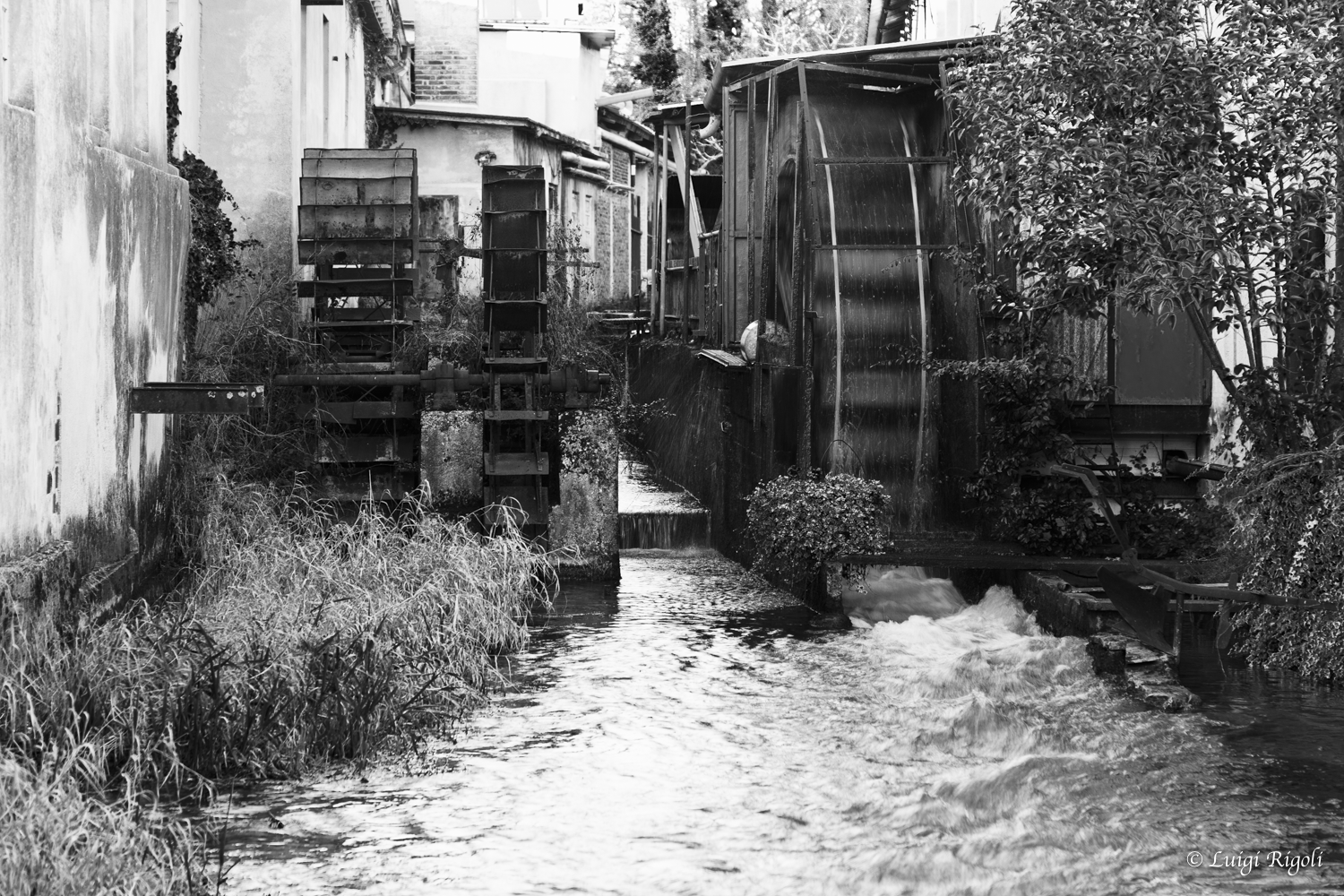Old Water Mill

Created on 15/1/2021 – Exposure time 1/13 sec, Aperture f/5.0, Focal length 105 mm
Photo reading
1) Detailed Image Analysis:
The photograph displays an old water mill system alongside a vigorously flowing canal, captured in black and white. Various textures are immediately apparent: the smooth flow of the water, the rugged metal of the mill machinery, and the wild, untamed vegetation flanking the canal. There are small details such as the water droplets visible on the metal surfaces and the individual leaves of the overgrown plants that add a sense of authenticity and timelessness to the scene. The absence of human presence gives the image a serene yet abandoned atmosphere.
2) Interpretation of the Message:
The monochrome palette and the subject matter suggest themes of history, industry, and nature. It may convey a message about the passage of time and the endurance of nature versus the decay of man-made structures. There is a sense of forgotten history, where nature slowly reclaims what was once a site of human activity.
3) Technical Choices:
– 3a) Light: The light in this photograph seems natural and diffused, possibly overcast, which softens the shadows and reduces harsh contrasts. It highlights the textures of the various surfaces and the movement of the water without overwhelming the scene with brightness.
– 3b) Image Planes: There are three distinct planes. The foreground is dominated by the wild grass and part of the mill machinery. The middle ground features the central part of the mill and the canal, while the background shows the continuation of the buildings and vegetation, fading into the distance, which adds depth.
– 3c) Tones: The monochromatic tones range from deep blacks to bright whites, with a wide spectrum of grays in between. This balance gives the photograph a dynamic range and helps to differentiate the elements within the scene.
– 3d) Framing: The framing is horizontal and wide, suitable for capturing the extension of the canal and the mill. It leads the eye from the left with the mechanical structures to the right where the water flows away, creating a narrative movement.
– 3e) Point of View: The point of view is slightly elevated, looking down upon the scene, which gives a comprehensive view of the water mill and the canal, allowing the viewer to take in both the machinery and the water as a connected system.
– 3f) Subjects: The primary subject is the mill and its interaction with the flowing water. Secondary subjects include the surrounding vegetation and the buildings, which provide context and scale.
– 3g) Compositional Structure: There is a balance between the static elements (the mill and buildings) and the dynamic element (the water). The use of leading lines, such as the edges of the canal and the machinery, directs the viewer’s gaze through the photograph.
– 3h) Dynamism: The dynamism in this image is provided by the water; its movement is captured in a way that contrasts with the stillness of the surrounding environment, emphasizing the passage of time and the enduring presence of the waterway.
